The Impact of COVID-19 on Solid Waste Generation in the Perspectives of Socioeconomic and People’s Behavior: A Case Study in Serdang, Malaysia
Abstract
:1. Introduction
2. Methods
2.1. Study Area
2.2. Effect of COVID-19 Restriction on Solid Waste Generation
2.3. Effect of COVID-19 Restriction on Socioeconomic and People’s Behavior
2.4. Statistical Analysis
3. Results and Discussion
3.1. Impact of COVID-19 Restriction on Solid Waste Generation
3.2. Survey Results
3.2.1. Quantitative Aspect of the Solid Waste Generation
3.2.2. Solid Waste Generation Subjected to Socioeconomic
3.2.3. Solid Waste Generation Subjected to People’s Behavior
4. Conclusions
Author Contributions
Funding
Institutional Review Board Statement
Informed Consent Statement
Data Availability Statement
Acknowledgments
Conflicts of Interest
References
- Jribi, S.; Ben Ismail, H.; Doggui, D.; Debbabi, H. COVID-19 virus outbreak lockdown: What impacts on household food wastage? Environ. Dev. Sustain. 2020, 22, 3939–3955. [Google Scholar] [CrossRef] [Green Version]
- ThinkCity. COVID-19 Crisis: Preserving Lives & Livelihoods, a Guide for Malaysian Policymakers; ThinkCity: Kuala Lumpur, Malaysia, 2020. [Google Scholar]
- Salim, N.; Chan, W.H.; Mansor, S.; Bazin, N.E.N.; Amaran, S.; Faudzi, A.A.M.; Zainal, A.; Huspi, S.H.; Khoo, E.J.H.; Shithil, S.M. COVID-19 epidemic in Malaysia: Impact of lock-down on infection dynamics. medRxiv 2020. [Google Scholar] [CrossRef] [Green Version]
- Phonphoton, N.; Pharino, C. Multi-criteria decision analysis to mitigate the impact of municipal solid waste management services during floods. Resour. Conserv. Recycl. 2019, 146, 106–113. [Google Scholar] [CrossRef]
- Shaharudin, A.A. Protecting the Agriculture Sector during the COVID-19 Crisis. KRI Views 2020, 27, 1–14. [Google Scholar]
- Ferlito, C.; Perone, G. COVID-19 and the MCO: An Exit Strategy for Malaysia; IDEAS: Kuala Lumpur, Malaysia, 2020. [Google Scholar]
- Abas, M.A.; Wee, S.T. Municipal Solid Waste Management in Malaysia: An Insight towards Sustainability. SSRN Electron. J. 2014. [Google Scholar] [CrossRef]
- Manaf, L.A.; Abu Samah, M.A.; Zukki, N.I.M. Municipal solid waste management in Malaysia: Practices and challenges. Waste Manag. 2009, 29, 2902–2906. [Google Scholar] [CrossRef] [PubMed]
- Lee, Y.-E.; Jo, J.-H.; Kim, S.-M.; Yoo, Y.-S. Recycling possibility of the salty food waste by pyrolysis and water scrubbing. Energies 2017, 10, 210. [Google Scholar] [CrossRef] [Green Version]
- Hamid, A.A.; Ahmad, A.; Ibrahim, M.H.; Rahman, N.N.N.A. Food Waste Management in Malaysia-Current situation and future management options. J. Ind. Res. Technol. 2012, 2, 36–39. [Google Scholar]
- FAOSTAT. Food and Agriculture Organization of the United Nations Statistics Division. Available online: http://faostat3.fao.org/download/Q/QC/E (accessed on 1 September 2015).
- Alias, F.S.; Abd Manaf, L.; Ariffin, M.; Ho Abdullah, S. Solid waste minimization in Malaysia. Pertanika J. Sch. Res. Rev. (PJSRR) 2018, 4, 26–41. [Google Scholar]
- Sadhukhan, J.; Martinez-Hernandez, E.; Murphy, R.J.; Ng, D.K.S.; Hassim, M.H.; Ng, K.S.; Kin, W.Y.; Jaye, I.F.M.; Hang, M.Y.L.P.; Andiappan, V. Role of bioenergy, Biore finery and bioeconomy in sustainable development: Strategic pathways for Malaysia. Renew. Sustain. Energy Rev. 2018, 81, 1966–1987. [Google Scholar] [CrossRef]
- Shafie, F.A.; Omar, D.; Karuppannan, S.; Ismail, N. Urban-Scale Material Flow Analysis: Malaysian Cities Case Study. Int. J. Environ. Sustain. 2016, 5, 45–53. [Google Scholar] [CrossRef]
- Robinson, R.S. Purposive Sampling. In Encyclopedia of Quality of Life and Well-Being Research; Springer: Dordrecht, The Netherlands, 2014; pp. 5243–5245. [Google Scholar] [CrossRef]
- Zuo, M. Coronavirus leaves China with mountains of medical waste. South China Morning Post, 2 March 2020. [Google Scholar]
- Tun, M.M.; Juchelková, D. Drying methods for municipal solid waste quality improvement in the developed and developing countries: A review. Environ. Eng. Res. 2018, 24, 529–542. [Google Scholar] [CrossRef] [Green Version]
- Federation of Malaysian Consumers Associations (FOMCA). Press Release: Panic Buying Amidst the COVID-19 Crises. Consumers International. Available online: https://www.consumersinternational.org/media/343276/fomca-panicbuying16032020.pdf (accessed on 16 March 2020).
- Ismail, M.H.; Ghazi, T.; Hamzah, M.; Manaf, L.; Tahir, R.; Nasir, A.M.; Omar, A.E. Impact of Movement Control Order (MCO) due to Coronavirus Disease (COVID-19) on Food Waste Generation: A Case Study in Klang Valley, Malaysia. Sustainability 2020, 12, 8848. [Google Scholar] [CrossRef]
- Unilever Malaysia. Will COVID-19 Change Our Relationship with Food Forever; Unilever Malaysia: Kuala Lumpur, Malaysia, 2020. [Google Scholar]
- Khor, V.; Arunasalam, A.; Azli, S.; Khairul-Asri, M.G.; Fahmy, O. Experience from Malaysia during the COVID-19 Movement Control Order. Urology 2020, 141, 179–180. [Google Scholar] [CrossRef]
- Klemeš, J.J.; Van Fan, Y.; Tan, R.R.; Jiang, P. Minimising the present and future plastic waste, energy and environmental footprints related to COVID-19. Renew. Sustain. Energy Rev. 2020, 127, 109883. [Google Scholar] [CrossRef]
- Yousefi, M.; Oskoei, V.; Jafari, A.J.; Farzadkia, M.; Firooz, M.H.; Abdollahinejad, B.; Torkashvand, J. Municipal solid waste management during COVID-19 pandemic: Effects and repercussions. Environ. Sci. Pollut. Res. 2021, 28, 32200–32209. [Google Scholar] [CrossRef]
- Dente, S.; Hashimoto, S. COVID-19: A pandemic with positive and negative outcomes on resource and waste flows and stocks. Resour. Conserv. Recycl. 2020, 161, 104979. [Google Scholar] [CrossRef] [PubMed]
- Zambrano-Monserrate, M.A.; Ruano, M.A.; Sanchez-Alcalde, L. Indirect effects of COVID-19 on the environment. Sci. Total Environ. 2020, 728, 138813. [Google Scholar] [CrossRef]
- Burlea-Schiopoiu, A.; Ogarca, R.F.; Barbu, C.M.; Craciun, L.; Baloi, I.C.; Mihai, L.S. The impact of COVID-19 pandemic on food waste behaviour of young people. J. Clean. Prod. 2021, 294, 126333. [Google Scholar] [CrossRef]
- Ramachandra, T.; Bharath, H.; Kulkarni, G.; Han, S.S. Municipal solid waste: Generation, composition and GHG emissions in Bangalore, India. Renew. Sustain. Energy Rev. 2018, 82, 1122–1136. [Google Scholar] [CrossRef]
- Qu, X.-Y.; Li, Z.-S.; Xie, X.-Y.; Sui, Y.-M.; Yang, L.; Chen, Y. Survey of composition and generation rate of household wastes in Beijing, China. Waste Manag. 2009, 29, 2618–2624. [Google Scholar] [CrossRef] [PubMed]
- Dennison, G.; Dodd, V.; Whelan, B. A socio-economic based survey of household waste characteristics in the city of Dublin, Ireland. I. Waste composition. Resour. Conserv. Recycl. 1996, 17, 227–244. [Google Scholar] [CrossRef]
- Cheval, S.; Adamescu, C.M.; Georgiadis, T.; Herrnegger, M.; Piticar, A.; Legates, D.R. Observed and Potential Impacts of the COVID-19 Pandemic on the Environment. Int. J. Environ. Res. Public Health 2020, 17, 4140. [Google Scholar] [CrossRef] [PubMed]
- Collivignarelli, M.C.; Abbà, A.; Bertanza, G.; Pedrazzani, R.; Ricciardi, P.; Miino, M.C. Lockdown for COVID-2019 in Milan: What are the effects on air quality? Sci. Total Environ. 2020, 732, 139280. [Google Scholar] [CrossRef] [PubMed]
- Messner, W. The Institutional and Cultural Context of Cross-National Variation in COVID-19 Outbreaks. medRxiv 2020. [Google Scholar] [CrossRef] [Green Version]
- Bravi, L.; Francioni, B.; Murmura, F.; Savelli, E. Factors affecting household food waste among young consumers and actions to prevent it. A comparison among UK, Spain and Italy. Resour. Conserv. Recycl. 2020, 153, 104586. [Google Scholar] [CrossRef]
- Sulaiman, N.F.A.R.; Ahmad, A. Save The Food for A Better Future: A Discussion on Food Wastage in Malaysia. Int. J. Law Gov. Commun. 2018, 3, 12–21. [Google Scholar]
- Hussain, M.W.; Mirza, T.; Hassan, M.M. Impact of COVID-19 Pandemic on the Human Behavior. Int. J. Educ. Manag. Eng. 2020, 10, 35–61. [Google Scholar] [CrossRef]
- Hockett, D.; Lober, D.J.; Pilgrim, K. Determinants of Per Capita Municipal Solid Waste Generation in the Southeastern United States. J. Environ. Manag. 1995, 45, 205–217. [Google Scholar] [CrossRef] [Green Version]
- Sultana, S.; Islam, S.; Jahan, F.; Khatun, F. Awareness and Practice on Household Solid Waste Management among the Community People. Open J. Nurs. 2021, 11, 349–366. [Google Scholar] [CrossRef]
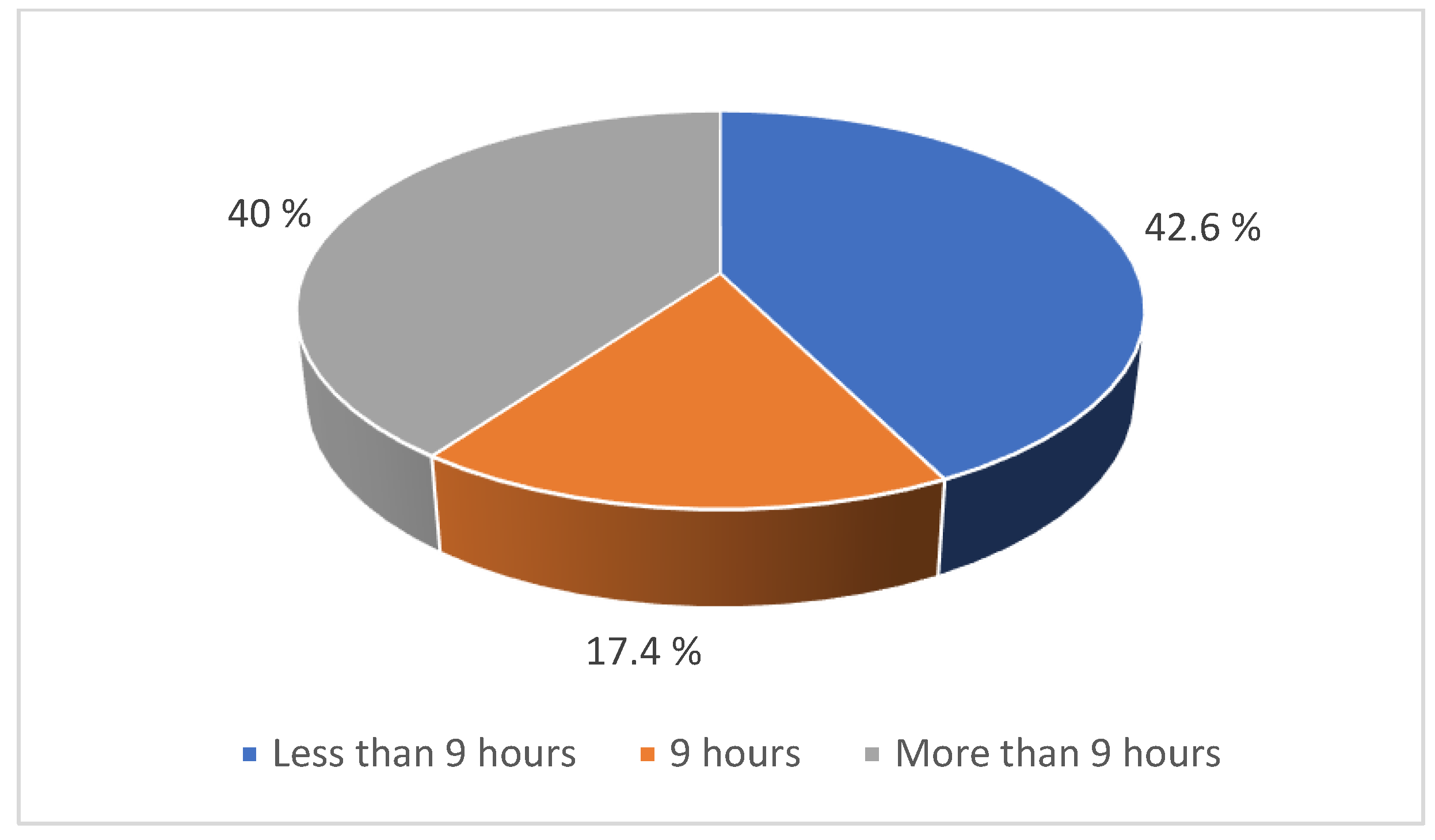
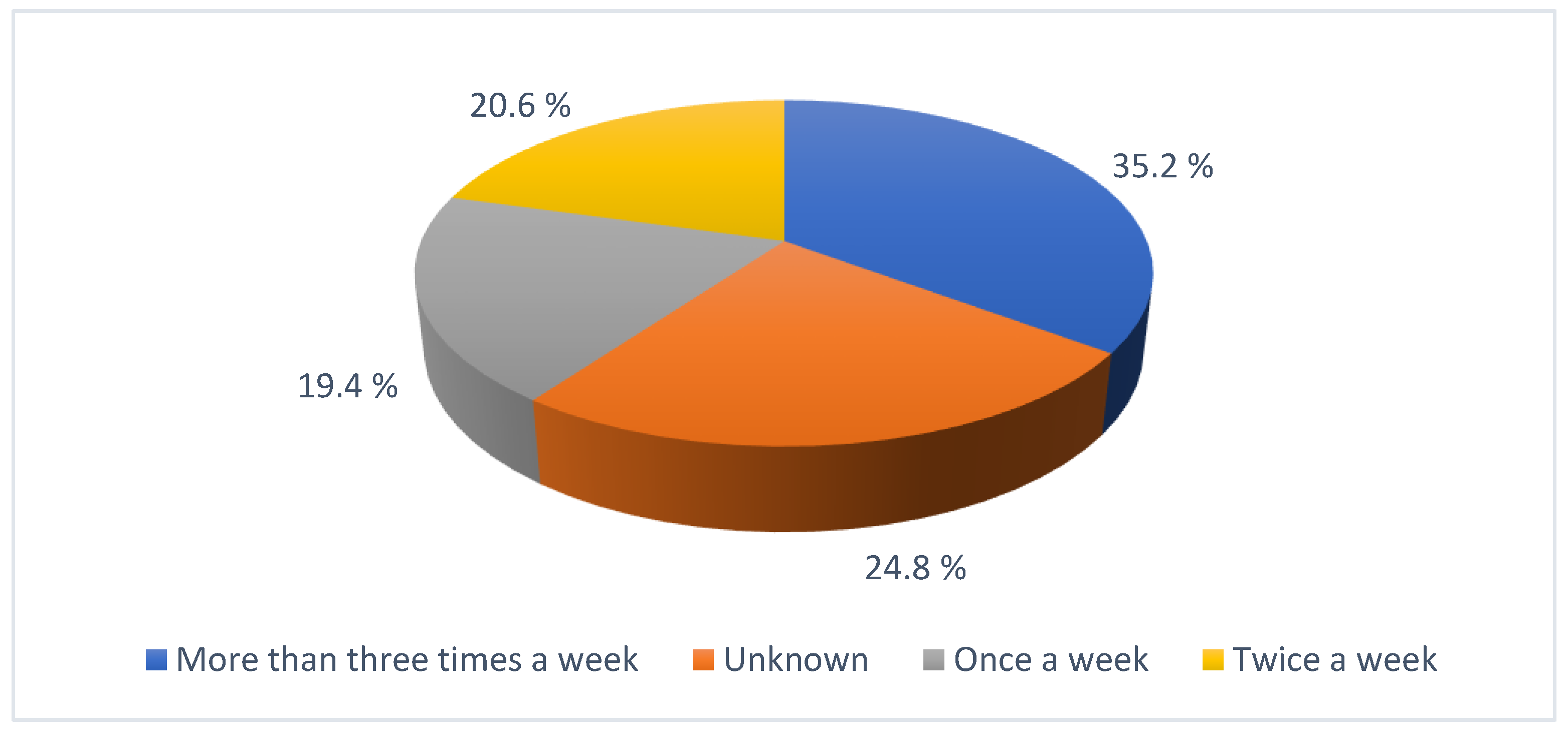
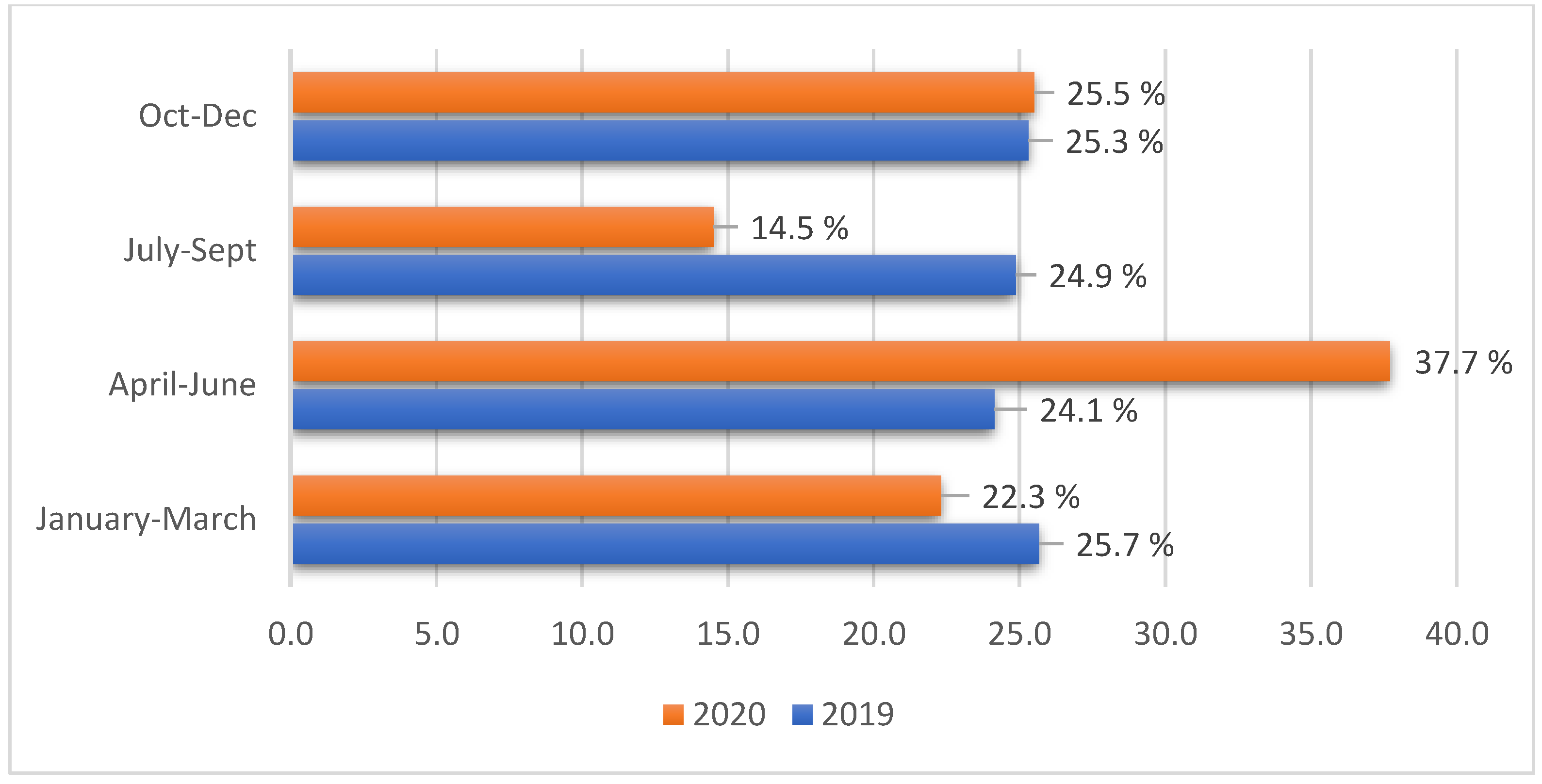
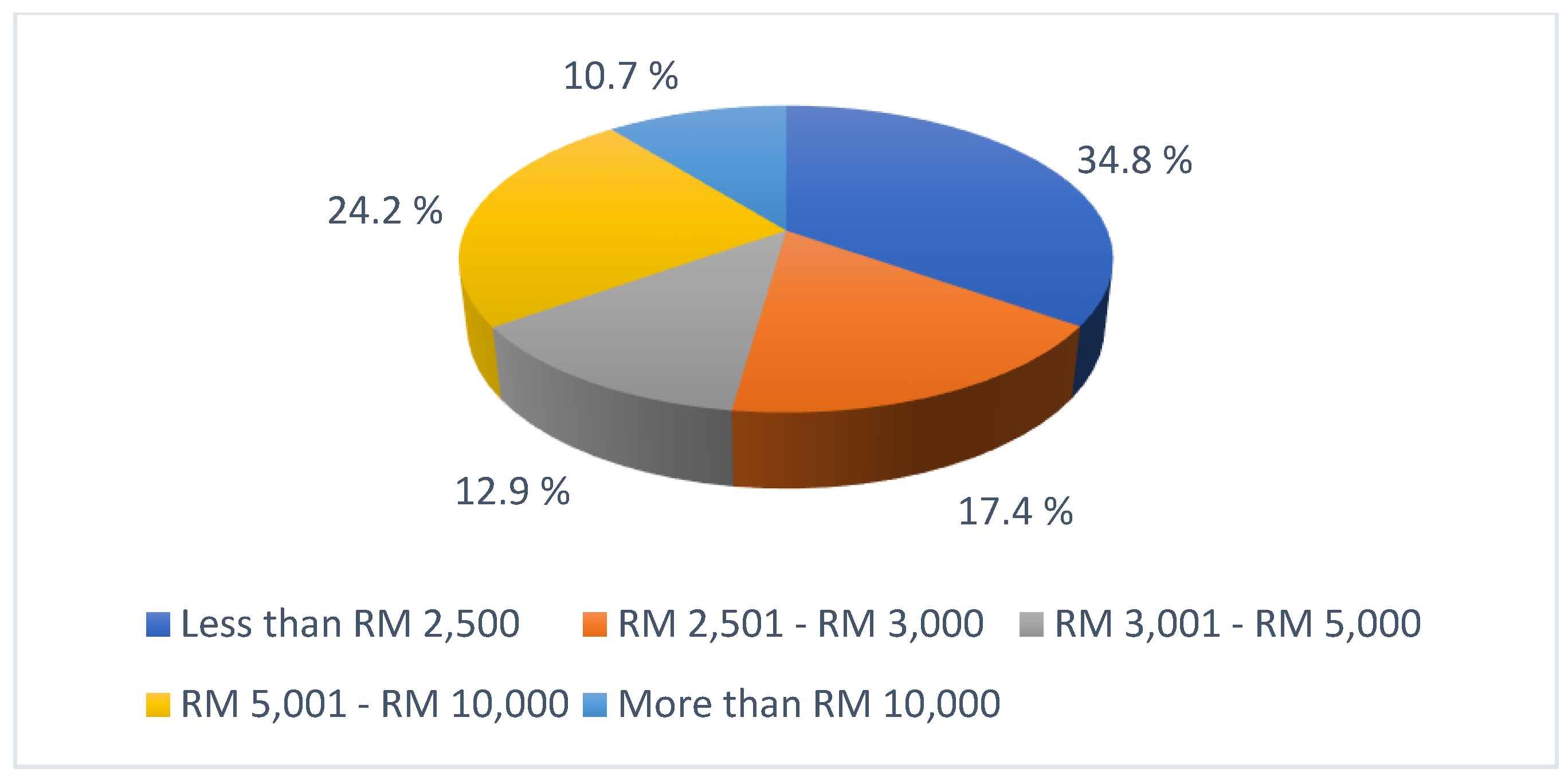
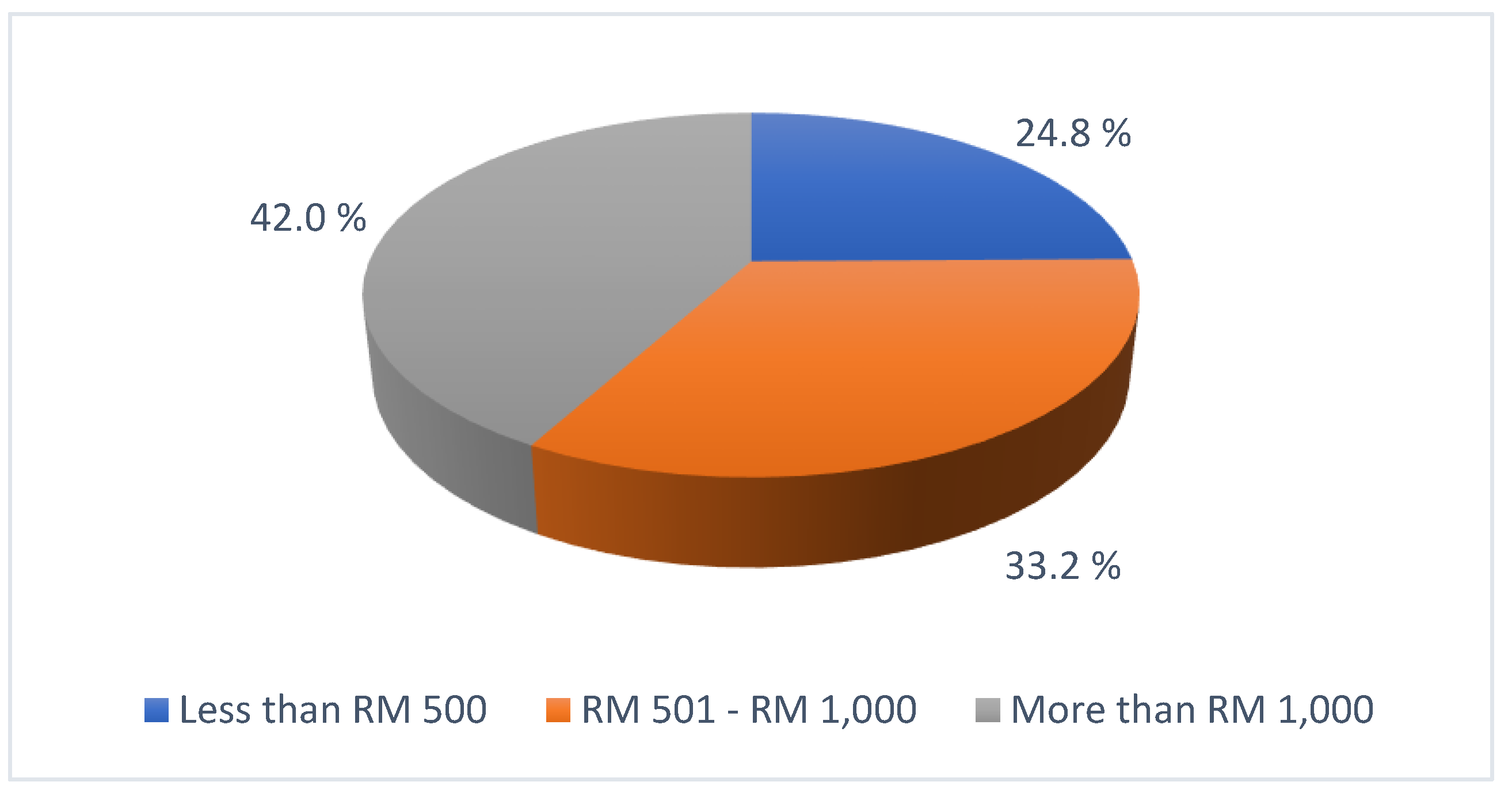
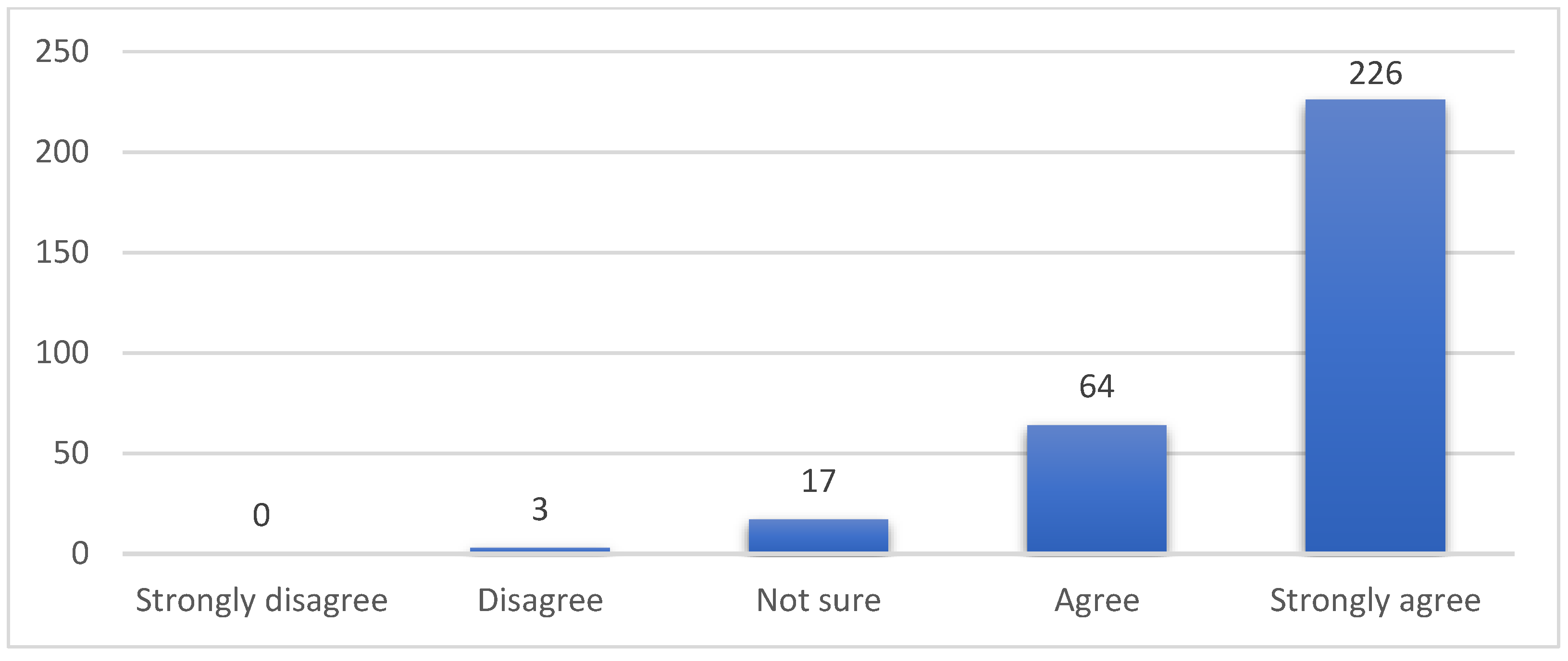
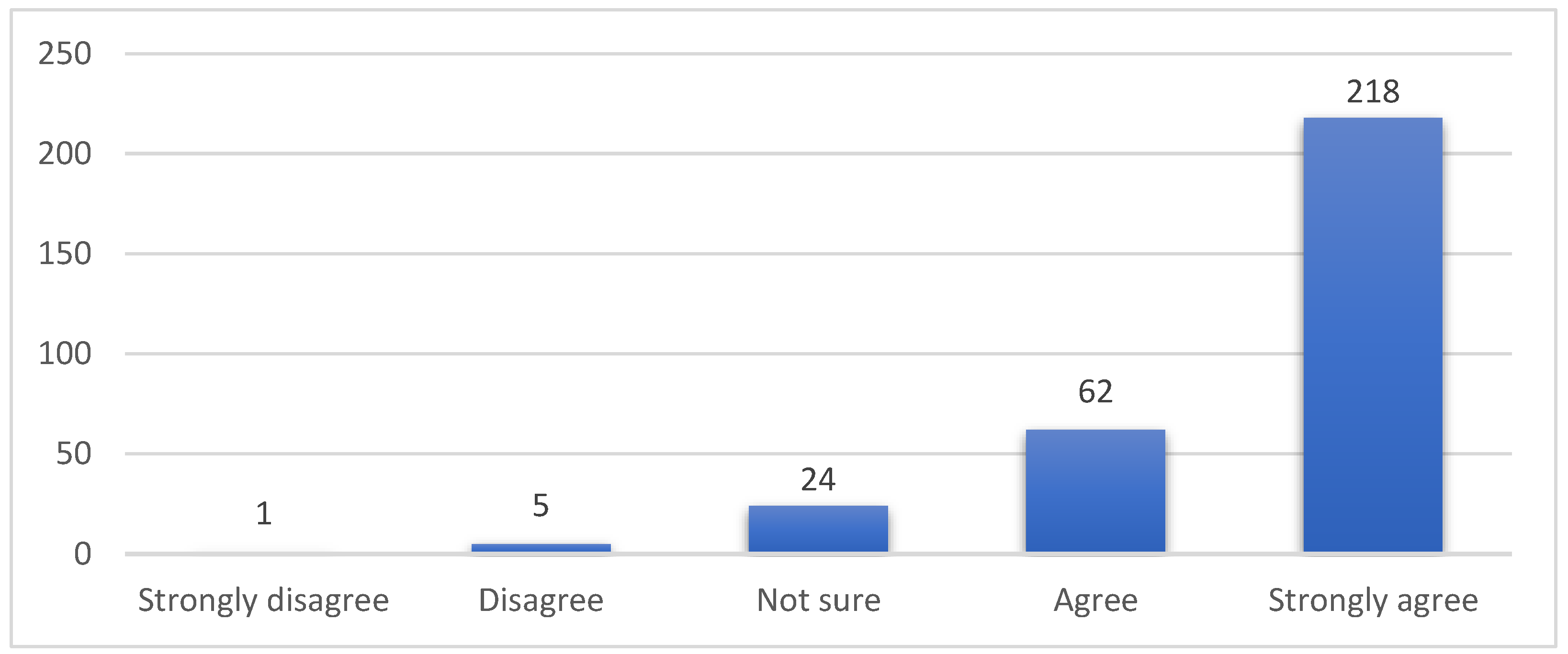
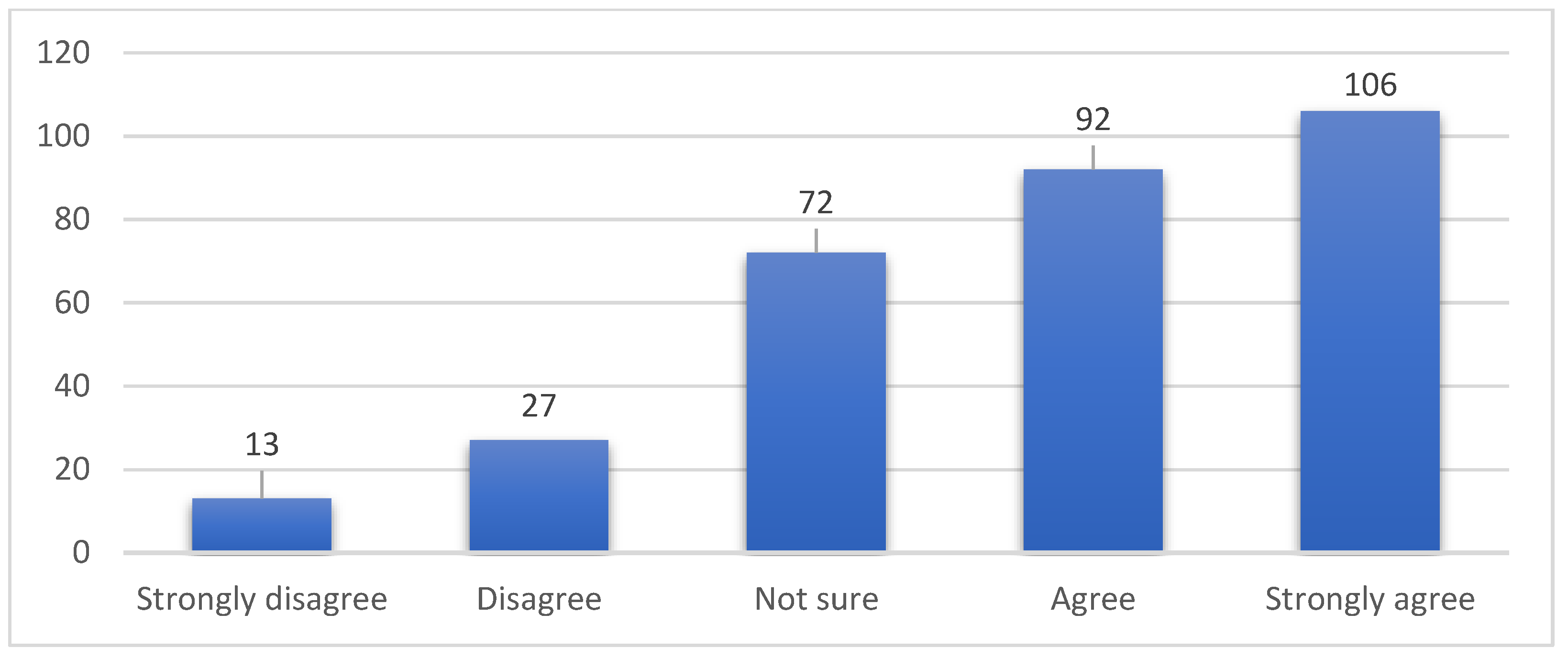
| Area | City Council | Zones |
|---|---|---|
| Serdang | Subang Jaya City Council | KDSJ 20 |
| KDSJ 21 | ||
| KDSJ 22 | ||
| KDSJ 23 | ||
| KDSJ 24 | ||
| Kajang City Council | KDKJ 23 |
| Question | Purpose and Indication | |
|---|---|---|
| 1 | Are you male or female? | Information on the gender of the respondent |
| 2 | What type of ownership house are you staying in? | Information on the types of ownership of the house |
| 3 | What is your monthly household income? | To have an idea on the respect of the socioeconomic |
| 4 | How much do you spend monthly on the house? | To have an idea on the respect of the socioeconomic |
| 5 | Do you participate in waste separation? | To have an idea of the people’s behavior on solid waste generation |
| 6 | Will you do waste separation if there were a bin around and if there are clear signs on it? | To have an idea of the people’s behavior on solid waste generation |
| 7 | Do you believe that waste separation can improve your living environment and public health? | To have an idea of the people’s behavior on solid waste generation |
| 8 | Do you think waste separation helps reduce our carbon footprints and is suitable for the environment? | To have an idea of the people’s behavior on solid waste generation |
| 9 | Do you agree to live in high rise building (apartment, flat) makes it difficult to do proper waste disposal? | To have an idea of the people’s behavior on solid waste generation |
| 10 | How has the pandemic affected your monthly income? | To have an overview of the solid waste quantitative aspect during lockdown |
| 11 | How many hours did you spend working from home? | To have an overview of the solid waste quantitative aspect during lockdown |
| 12 | How many times do you generate waste during the pandemic in a residential area? | To have an overview of the solid waste quantitative aspect during lockdown |
| 13 | Based on your opinion, which month duration do your family generates solid waste most? | To have an overview of the solid waste quantitative aspect during lockdown |
| Month | Solid Waste Collected (Tons) | Relative Change (%) | |
|---|---|---|---|
| Year 2019 | Year 2020 | ||
| January | 1448.42 * | 1442.61 * | −0.403 |
| February | 1530.83 | 1451.50 * | −5.465 |
| March | 1573.94 | 1457.22 | −8.010 |
| April | 1389.40 * | 1312.16 * | −5.886 |
| May | 1467.10 | 1538.69 | 4.653 |
| June | 1425.09 * | 1553.59 | 8.271 |
| July | 1497.11 | 1563.87 | 4.269 |
| August | 1482.73 | 1526.67 | 2.878 |
| September | 1431.97 * | 1524.96 | 6.098 |
| October | 1512.18 | 1585.20 | 4.606 |
| November | 1465.22 | 1543.04 | 5.043 |
| December | 1511.04 | 1577.58 | 4.218 |
| M ± SD | 1477.92 ± 50.962 | 1506.42 ± 78.147 | |
Publisher’s Note: MDPI stays neutral with regard to jurisdictional claims in published maps and institutional affiliations. |
© 2021 by the authors. Licensee MDPI, Basel, Switzerland. This article is an open access article distributed under the terms and conditions of the Creative Commons Attribution (CC BY) license (https://creativecommons.org/licenses/by/4.0/).
Share and Cite
Arumugam, V.; Abdullah, I.; Yusoff, I.S.M.; Abdullah, N.L.; Tahir, R.M.; Nasir, A.M.; Omar, A.E.; Ismail, M.H. The Impact of COVID-19 on Solid Waste Generation in the Perspectives of Socioeconomic and People’s Behavior: A Case Study in Serdang, Malaysia. Sustainability 2021, 13, 13045. https://doi.org/10.3390/su132313045
Arumugam V, Abdullah I, Yusoff ISM, Abdullah NL, Tahir RM, Nasir AM, Omar AE, Ismail MH. The Impact of COVID-19 on Solid Waste Generation in the Perspectives of Socioeconomic and People’s Behavior: A Case Study in Serdang, Malaysia. Sustainability. 2021; 13(23):13045. https://doi.org/10.3390/su132313045
Chicago/Turabian StyleArumugam, Veknesh, Ismail Abdullah, Irwan Syah Md Yusoff, Nor Liza Abdullah, Ramli Mohd Tahir, Ahadi Mohd Nasir, Ammar Ehsan Omar, and Muhammad Heikal Ismail. 2021. "The Impact of COVID-19 on Solid Waste Generation in the Perspectives of Socioeconomic and People’s Behavior: A Case Study in Serdang, Malaysia" Sustainability 13, no. 23: 13045. https://doi.org/10.3390/su132313045
APA StyleArumugam, V., Abdullah, I., Yusoff, I. S. M., Abdullah, N. L., Tahir, R. M., Nasir, A. M., Omar, A. E., & Ismail, M. H. (2021). The Impact of COVID-19 on Solid Waste Generation in the Perspectives of Socioeconomic and People’s Behavior: A Case Study in Serdang, Malaysia. Sustainability, 13(23), 13045. https://doi.org/10.3390/su132313045







